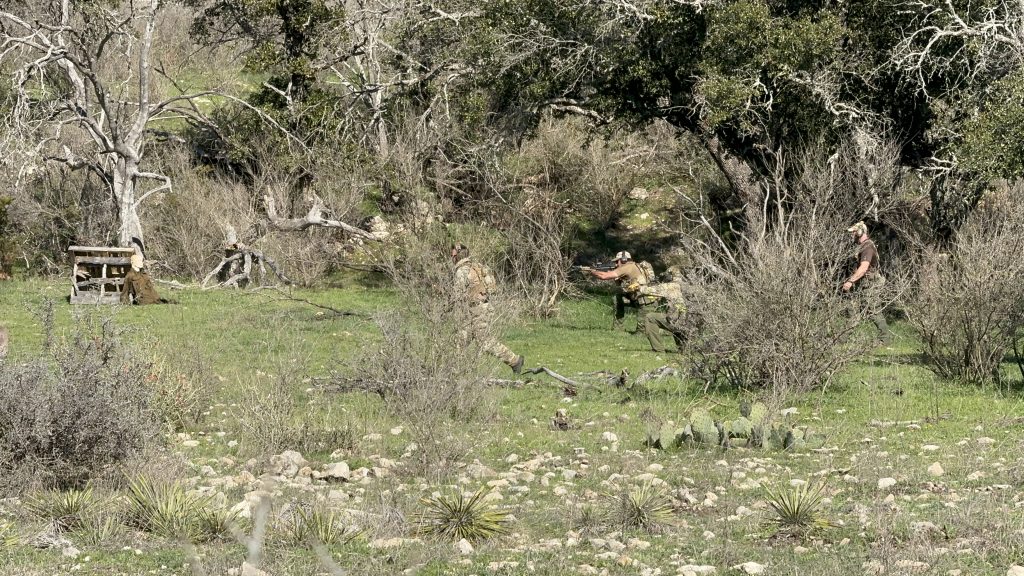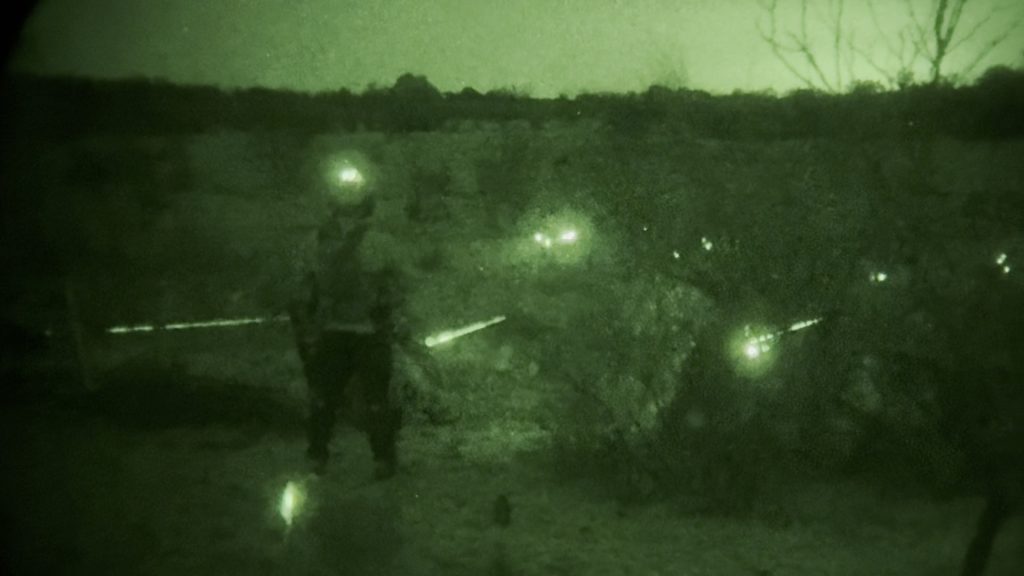Review: MVT Texas Alumni Live Fire Class: Chad S

MVT Texas Live Fire Class: Week Two
After Action Report
This is my second year participating in MVT Texas Alumni Week, and once again it did not disappoint. We had nine Colorado students for the class, five of which who attended last year, and four who have been training with the Colorado crew for the better part of 2023. This allowed us to roll into the drills feeling confident about basic fire and maneuver and communication between buddy pairs.
The week started off with TCCC (Tactical Combat Casualty Care) which was taught by William. I personally love Williams teaching style. He has a ton of experience in his long career caring for casualties as a helicopter flight nurse and hospital nurse. He uses his real-life experiences throughout the day to hammer home the important points about how to deal with a casualty, and
it’s extremely effective. Also, he makes the students participate in hands on training where we have to apply tourniquets, pack wounds with Kerlix, insert a nasal pharyngeal into a mannequin, insert a needle decompression dart through pork ribs attached to a ballon, perform MARCH start to finish on other students, and participate in different drags and litter carries. The class is geared towards how to deal with what wounds you could potentially face in a combat situation, such as gunfire wounds and explosive devices. Later in the week Max implements casualties where the students are required to perform TCCC in a high stress environment to either save or not save their team members.
The long-awaited Monday morning – River Assault:
Having attended last year I knew what to expect on the first morning of live fire training. Make sure there is plenty of coffee and scrambled eggs, anything else is a bonus. It was interesting to watch how the four new folks were reacting to it. Their anxiety level was most certainly elevated, mainly because of their uncertainty of what the hell they’d signed up for, but also the intensity of the room. I’ve trained with MVT half a dozen times now and during Texas week Max’s intensity level is highly palpable, to the point where you can cut the air with a knife. The atmosphere blankets you and you realize very quickly that this is some serious shit.
River Assault:Training starts at 8:00 sharp. Max sets the tone for the importance of safety and then moves into the lecture. After the lecture explaining what we are expected to do we rehearse it and then go do it. The River Assault is designed “in my opinion” for Max to see where the class is at with basic contact deployments and fire & maneuver. Max stresses the importance of staying on-line as we bound towards an enemy position, proper communication between alpha and bravo buddy pairs, situational awareness of each student, individual and team aggression, safety selector manipulation, and safety angles. This drill encompasses all of this. We start by patrolling through an area of thicker brush from an elevated position relative to the enemy. Contact is initiated from a flank fire position, and we roll into it. After the enemy is suppressed, we move forward bounding by buddy pairs and assault through the position. The limit of advance is reached, tacmags are performed, and team status is relayed to the team leader. Then we continue to move forward towards the river by bounding overwatch until we spot another enemy in depth. We engage the enemy, suppress, bound forward, assault through and LOA. The way the depth targets are set up in relationship to the terrain, the team has to re-orient themselves by swinging the line in order to attack from a straight-ahead position. Re-orienting is more difficult than you would think because if one person gets too far ahead or is behind, everything goes to shit. We ran the drill a second time but instead of ‘assaulting through’ the enemy position, we ‘fight through’
The drills are super high intensity. They essentially break the ice and set the stage for what is to come for the remainder of the week. This is where students who have never been to Texas Week realize the overall scale of the terrain, the difficulty of the terrain, the physical fitness needed to perform there, and the pure chaos of what a firefight could potentially look like in real life.
I don’t want to describe every drill in detail that is performed throughout the course of the week because if you read this and become interested in attending, I would hate to ruin the surprise. What I will say is that Max does a phenomenal job of building on each day as we move through the week. He peels apart the complexities of squad tactics like an onion, with each layer becoming more and more complicated and sophisticated. His training methods are extraordinary. I truly feel like, in fact I know that there is nowhere else in the states, possibly the globe that civilians can receive this type of training. I commend Max for being brave enough to teach it, and I’m grateful that I’m a part of it. I will end with saying that in one particular iteration of assault sequencing on Friday I felt like it was the best and most profound training that I have ever been a part of in my life. Our squad received
multiple casualties, one of which was fatal, and every student did such a great job acting out the scenario that it felt real enough for some of us to get shaken up. To quote the leader of the Colorado crew, “The last thing we ever want to do is to actually have to do this shit for real, but if we have to, we need to know how to do it well. You can’t do this shit with a pick-up team.”
Chad S, aka SQUIRREL
NOTE: The Texas Live Fire class, in its current iteration, is an MVT Alumni class, which requires attendance on a HEAT 1 class. This is to ensure familiarity with the basics of safety and performance of drills, before progressing onto this class. Texas is a hybrid class that covers aspects of the HEAT 2 class, with additional training that we are unable to cover on HEAT 2 at the West Virginia VTC, due to the available terrain.


Leave a Reply
You must be logged in to post a comment.